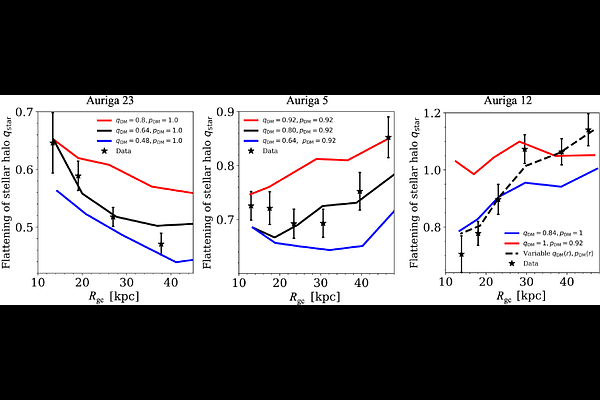Uncover 3D Dark Matter Distribution of the Milky Way by an Empirical Triaxial Orbit-Superposition Model: Method Validation

Uncover 3D Dark Matter Distribution of the Milky Way by an Empirical Triaxial Orbit-Superposition Model: Method Validation
Ling Zhu, Xiang-Xiang Xue, Shude Mao, Chengqun Yang, Lan Zhang
AbstractWe introduce a novel dynamical model, named empirical triaxial orbit-superposition model, for the Milky Way halo. This model relies on minimal physical assumptions that the system is stationary, meaning the distribution function in 6D phase-space does not change when the stars orbiting in the correct gravitational potential. We validate our method by applying it to mock datasets that mimic the observations of the Milky Way halo from LAMOST + Gaia with stars' 3D position and 3D velocity observed. By removing the stellar disk and substructures, correcting the selection function, we obtain a sample of smooth halo stars considered as stationary and complete. We construct a gravitational potential including a highly flexible triaxial dark matter halo with adaptable parameters. Within each specified gravitational potential, we integrate orbits of these halo stars, and build a model by superposing the orbits together taking the weights of stars derived from the selection function correction. The goodness of the models are evaluated by comparing the density distributions as well as 3D velocity distributions numerically represented in the model to that in the data. The shape and radial density distribution of the underlying dark matter halo can be constrained well simultaneously. We apply it to three mock galaxies with different intrinsic shapes of their dark matter halos and achieved accurate recovery of the 3D dark matter density distributions for all.